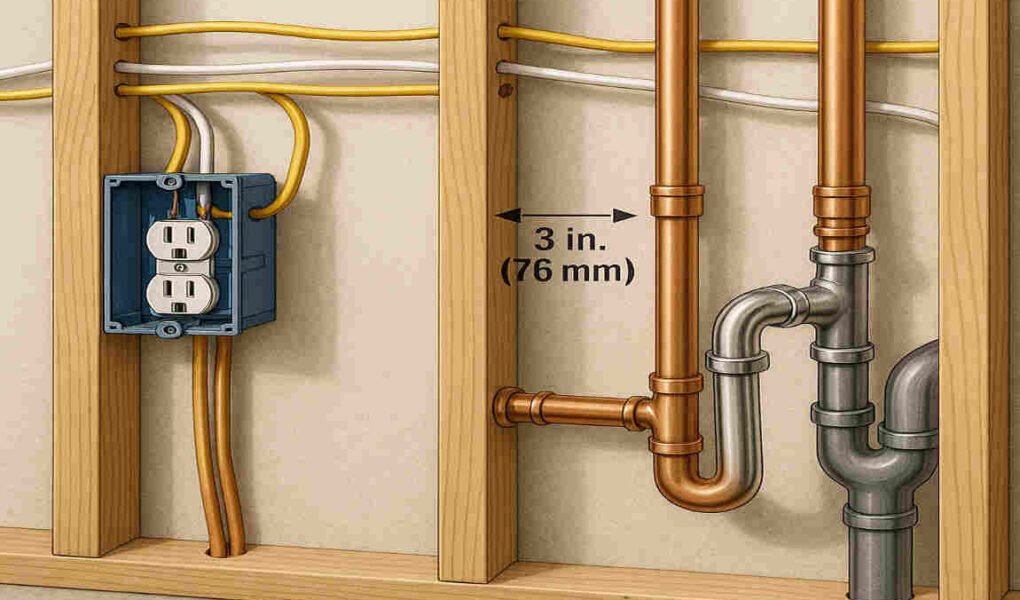When it comes to home improvement, electrical and plumbing installations are fundamental components of any project. However, combining these two systems in close proximity raises an important question for homeowners and DIY enthusiasts: Can you run electrical wire next to home plumbing? The answer is not a simple yes or no—it depends on safety guidelines, proper installation techniques, and compliance with building codes.
Understanding the Basics: Electrical Wiring and Home Plumbing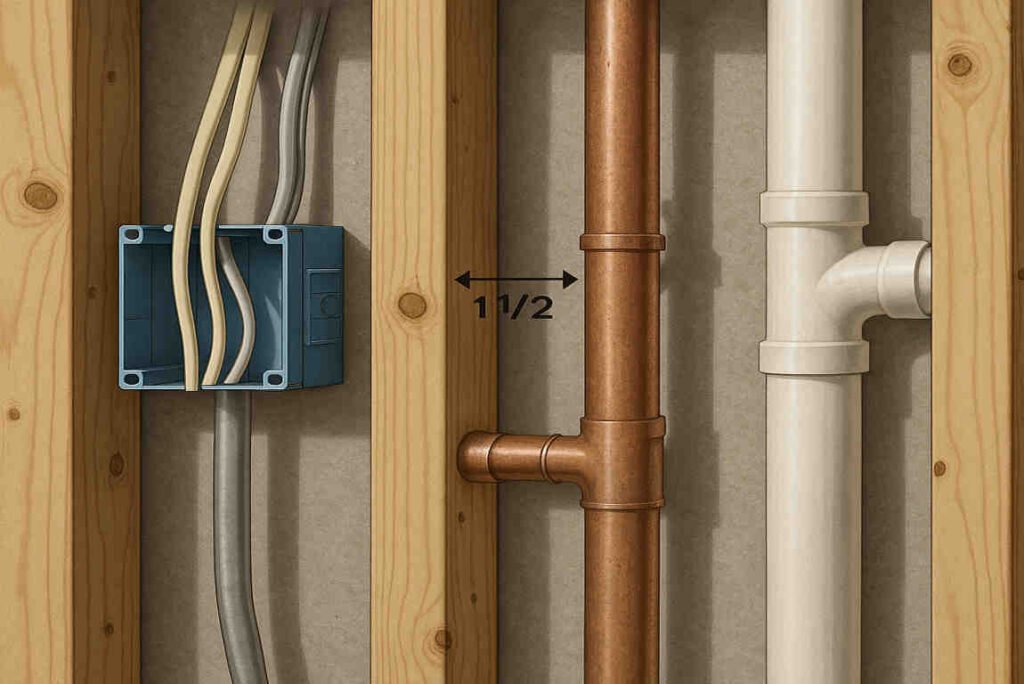
Before diving into rules and installation methods, it’s essential to understand the basic components of electrical wiring and home plumbing. This foundational knowledge will enable you to make informed decisions throughout your project.
Electrical Wiring Types Used in Homes
Home electrical systems typically use the following types of wiring:
- Non-Metallic (NM) Cable: Commonly referred to as Romex, this type of wiring is flexible, easy to install, and suitable for indoor applications.
- Conduit Wiring: Protective tubing (made of metal or PVC) that encases wires, often used in areas requiring extra durability or outdoor environments.
- Underground Feeder (UF) Cable: Designed for underground installations, this cable is water-resistant and durable.
- Armoured Cable (BX): Features a metal covering for additional protection, often used in areas prone to damage.
Each wiring type offers unique benefits depending on the location and application. Understanding these differences is crucial when planning your layout near plumbing.
Common Plumbing Systems and Materials
Plumbing systems transport water and waste throughout your home. The most common materials used for plumbing include:
- Copper Pipes: Durable and long-lasting but prone to corrosion if exposed to certain conditions.
- PVC Pipes: Lightweight, affordable, and resistant to rust, often used for drain lines.
- PEX Pipes: Flexible and easy to install, suitable for both hot and cold water supply.
- Galvanized Steel Pipes: Found in older homes, though they are less common today due to rust and corrosion issues.
Why Proximity Matters
Running electrical wiring near plumbing can pose several risks. Water and electricity are a dangerous combination, and improper installation can lead to:
- Electrical shocks if wires are exposed to moisture.
- Corrosion of wires caused by prolonged contact with water or condensation.
- Fire hazards from short circuits or compromised insulation.
This is why keeping a safe distance between these systems is a critical consideration in home installations.
Building Codes and Safety Regulations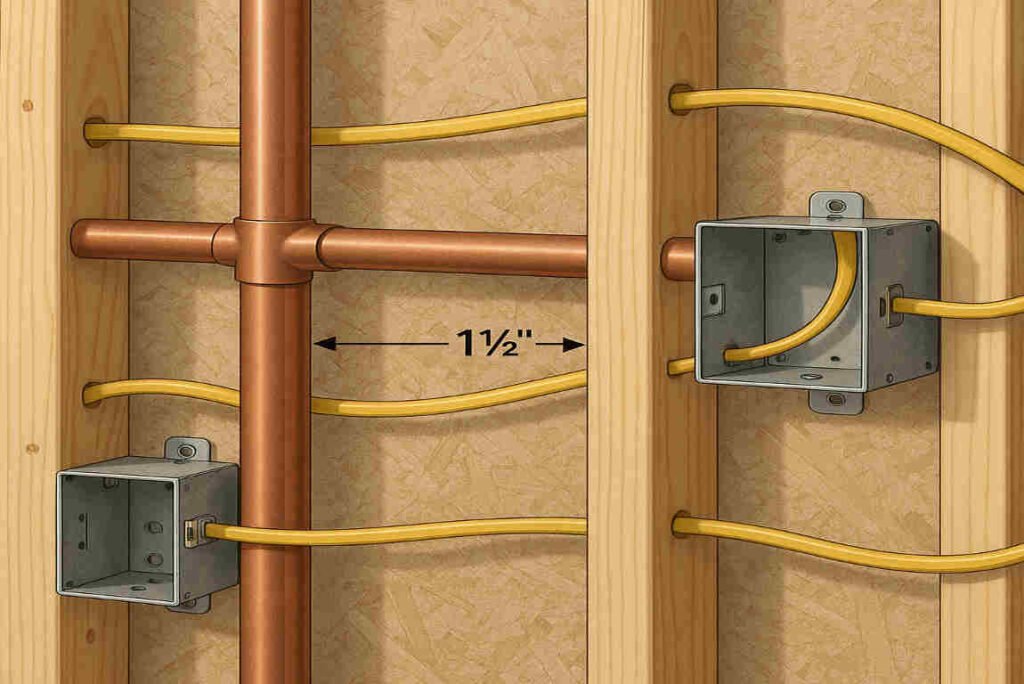
To answer the question, “Can you run electrical wire next to home plumbing?” you must first understand the building codes and safety regulations that govern these installations.
You may also read (do i have a smart meter installed in my house).
Overview of Relevant Codes
Building codes are designed to ensure your home is safe and compliant with industry standards. While these codes vary by jurisdiction, some general guidelines include:
- Spacing Requirements: A common recommendation is maintaining at least 12 inches of separation between electrical wiring and plumbing pipes. However, exceptions may apply based on insulation and protective measures.
- Shared Holes: In some cases, wires and pipes can pass through the same hole if properly insulated and free from damage risks.
- Insulation Standards: Electrical wires near plumbing must have adequate insulation to prevent contact with moisture.
Always consult your local building codes or a licensed professional to ensure compliance. Ignoring these regulations can lead to costly fines, failed inspections, or worse, unsafe conditions in your home.
Why Compliance Matters
Failing to adhere to safety regulations can have serious consequences, including:
- Increased risk of electric shocks or house fires.
- Expensive repairs if inspections reveal improper installations.
- Void warranties or insurance claims in the event of damage.
Takeaway: Never skip the step of consulting your local codes or a professional electrician/plumber. It’s a small effort that ensures long-term safety and peace of mind.
Risks of Running Electrical Wire Next to Plumbing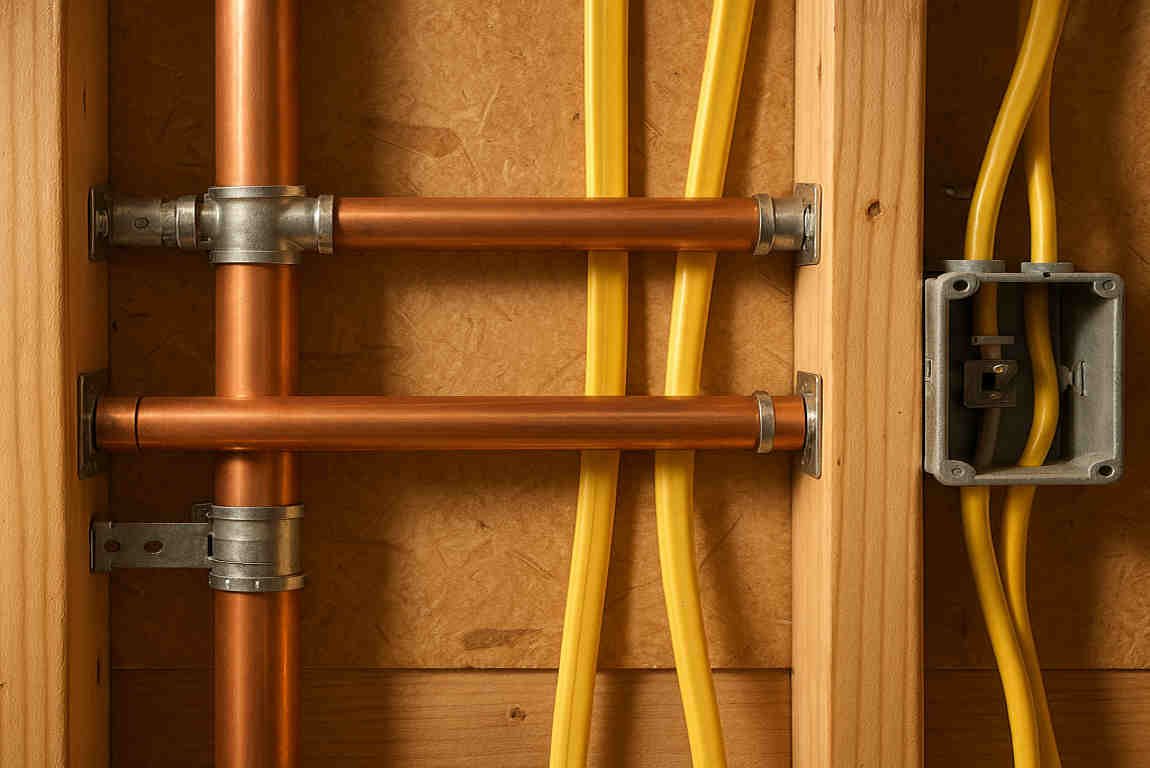
While it’s possible to install electrical wiring near plumbing, there are inherent risks you need to mitigate. Let’s break down the potential hazards and their implications.
Key Risks to Consider
- Electrical Shock: Water is an excellent conductor of electricity. If wires come into contact with moisture, it can result in dangerous shocks.
- Short Circuits: Damaged insulation or exposed wires near plumbing can create short circuits, leading to power outages or fires.
- Corrosion: Metal pipes can cause wires to corrode over time, especially if there’s condensation or leaks.
- Fire Hazards: Improper installation increases the likelihood of sparks, which can ignite nearby materials.
You may also read (understanding cda in home real estate a guide)
Consequences of Improper Installation
Improperly installed systems can lead to a cascade of problems, such as:
- Structural damage from water and fire-related incidents.
- Expensive utility repairs or complete system overhauls.
- Safety hazards for occupants, especially in wet environments like bathrooms or kitchens.
Best Practices for Installing Electrical Wire Next to Plumbing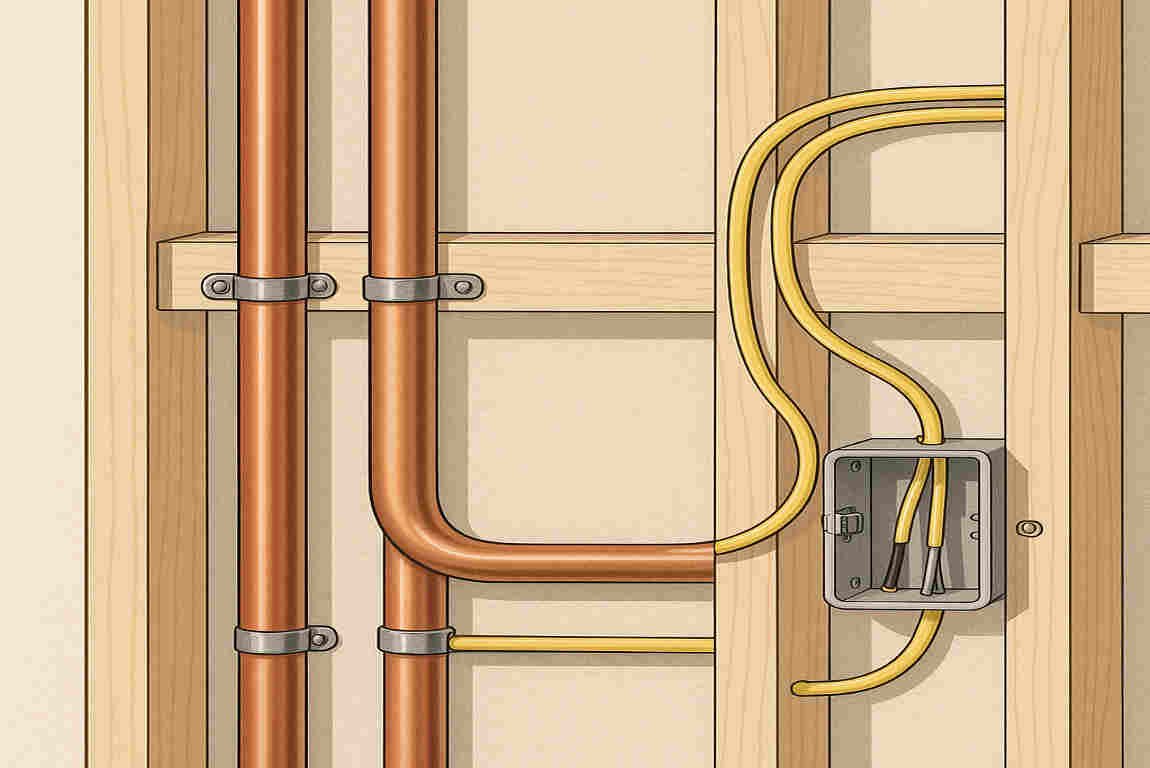
To ensure safety and compliance, follow these best practices when running electrical wiring near plumbing.
Plan the Layout Carefully
- Keep wires and plumbing pipes in separate stud bays where possible.
- Map out routes for both systems to avoid overlap and minimize proximity.
Use Protective Barriers
- Install conduits (metal or PVC) around electrical wires to shield them from moisture or physical damage.
- Utilize fire-resistant insulation to separate wires and pipes in tight spaces.
Safely Run Wires Through Shared Holes
If you must run wires and pipes through the same hole:
- Use grommets or insulated bushings to prevent direct contact.
- Ensure wires are well-insulated and protected from sharp edges.
Proper Grounding Techniques
- Ground electrical systems properly to reduce the risk of electrical shock.
- Double-check grounding connections near water heaters or plumbing fixtures.
Step-by-Step Guide to Safe Installation
Here’s a simple, step-by-step process for safely installing electrical wires near plumbing systems.
Tools and Materials Needed
- Drill
- Grommets or bushings
- Conduit or cable clamps
- Fire-resistant insulation
- Electrical tape
- Tape measure
- Building plans
Plan the Layout
- Mark routes for electrical wires and plumbing pipes.
- Identify areas where spacing may be tight and plan protective measures.
Drill Holes
- Drill separate holes for wires and pipes whenever possible.
- If sharing a hole, use grommets to insulate wires from pipes.
Install and Secure
- Run wires through conduits or protective barriers.
- Secure wires and pipes to studs with clamps to prevent movement.
Inspect and Test
- Check for proper insulation and grounding.
- Use a voltage tester to ensure wires are functioning safely.
Finalize Installation
- Cover exposed areas with fire-resistant insulation or protective plates.
- Ensure all systems comply with local codes before sealing walls.
Common Mistakes to Avoid
Avoid these pitfalls to ensure a safe and successful installation:
- Running bare or damaged wires near plumbing pipes.
- Failing to insulate wires properly, especially in shared holes.
- Ignoring local building code requirements.
- Overcrowding wall cavities with both systems.
- Skipping professional inspections before finalizing the project.
When to Consult Professionals
Some projects are too complex to handle alone. Consider hiring a professional if:
- You’re unfamiliar with local codes or safety standards.
- The layout involves complex intersections of plumbing and electrical systems.
- You’re working in high-risk areas like bathrooms or outdoor spaces.
You may also read (5 key benefits of wet venting in home plumbing).

